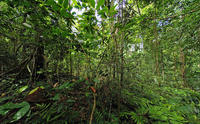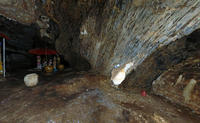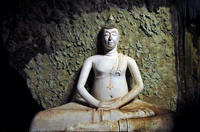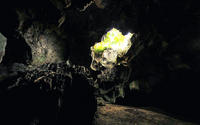You are in: Asia -> Thailand -> Dong Phayayen-Khao Y... , and traditional search or Image Gallery will yield results of this site only
Dong Phayayen-Khao Yai Forest Complex
| Site number: | 590 |
|
| Type of site: | Natural | |
| Date: | - | |
| Date of Inscription: | 2005 | |
| Location: | Asia, Thailand, Provinces of Saraburi, Nakhon Nayok, Nakhon Rachisima, Prachinburi, Srakaew, Burirum | |
Up to 75 images are shown here. Click on each for more details or on Image Gallery for more images.
| Description: | From Ta Phraya National Park on the Cambodian border in the east, and Khao Yai National Park in the west, the Dong Phayayen-Khao Yai Forest Complex in full extends over 230km. The site is made up of a jagged mountainous area ranging anywhere between 100m to 1,351m in height (with some 7,500 of its 615,500 hectares sitting above 1,000m). A number of tributaries of the Mun River (in itself a Mekong River tributary) drain the site’s northern side. The southern side is drained by several picturesque waterfalls and ravines and four major, high-speed streams that run into the Prachinburi River. The site houses over 800 fauna species, consisting of 112 mammal species (an example being two species of gibbon), 392 bird species and 200 reptiles and amphibians. It holds worldwide significance for globally threatened and endangered animal conservation: mammal, bird and reptile species (among which 19 that are at risk, four are endangered, and one that is perilously endangered). Substantial and eminent tropical forest ecosystems grace the area; these present a feasible habitat for the continued existence in the long-term of these species. --WHMNet paraphrase from the description at WHC Site, where additional information is available. For 360 degree imaging of this site, click here. | |
| Khao Yai National Park (Thai เขาใหญ่) is a national park in Thailand. It lies largely in Nakhon Ratchasima Province (Khorat), but also includes parts of Saraburi, Prachinburi and Nakhon Nayok provinces. It was the country's first national park, established on September 18, 1962. A major role in its establishment was done by Boonsong Lekakul, one of the 20th century's most famous conservationists in Thailand.The park is the second largest in Thailand. It covers an area of 2,168 square kilometers, including evergreen forests and grasslands. Its altitude mostly ranges from 400 to 1000 m above sea level. There are 3,000 species of plants, 320 species of birds and 67 species of mammals, including Asiatic black bears, Asian elephants, gaur, tigers, gibbons, Indian sambar deer, Indian muntjac, dholes, and wild pigs. Its waterfalls include the 80 metre Heo Narok, and Haeo Suwat made famous from the film The Beach. Namtok Sarika is popular with the Thais.Recent wildlife studies show that animal ranges, particularly the few resident tigers, are impacted by human activity near the center of the park. This study has not impacted the government's call for private lodging concessions within the park itself.The park is often visited by travellers from Isan, Bangkok and beyond, for whom there are over 50km of hiking trails.In 1984 the park was made an ASEAN Heritage Park, and on July 14 2005 the park together with other parks in the Dong Phaya Yen mountains was inscribed as a UNESCO World Heritage Site under the name Dong Phaya Yen–Khao Yai Forest Complex. Lands adjacent to the national park are increasingly developed into luxury hotels and golf courses for weekending visitors from Bangkok. Such development limits wildlife corridors and permanently reduces future conservation and land acquisition ability. --Wikipedia. Text is available under the Creative Commons Attribution-ShareAlike License. For 360 degree imaging of this site, click here. | ||
| Source: | http://whc.unesco.org/en/list/590 | |
| Reference: | 1. UNESCO World Heritage Center, Site Page. | |




























